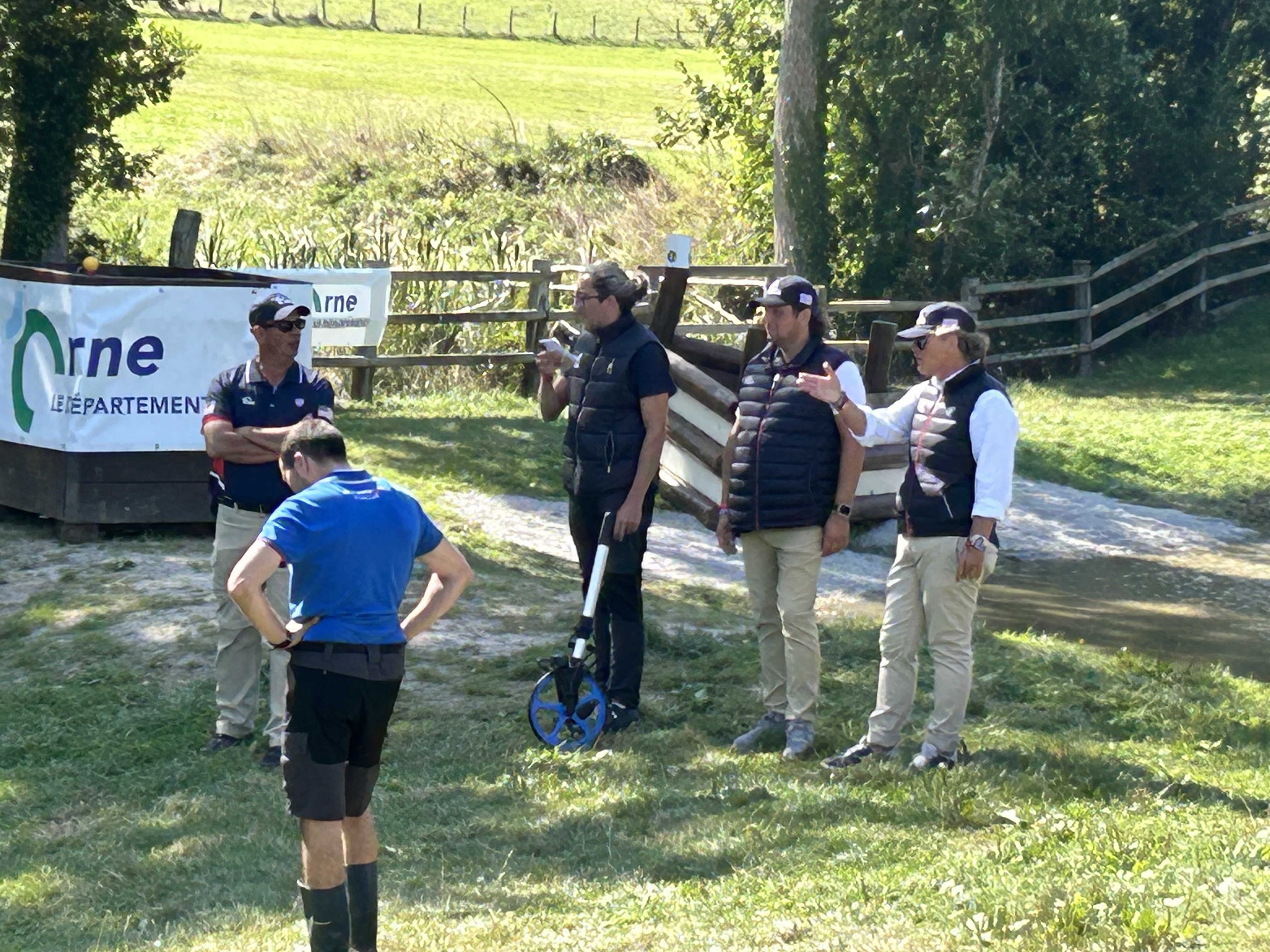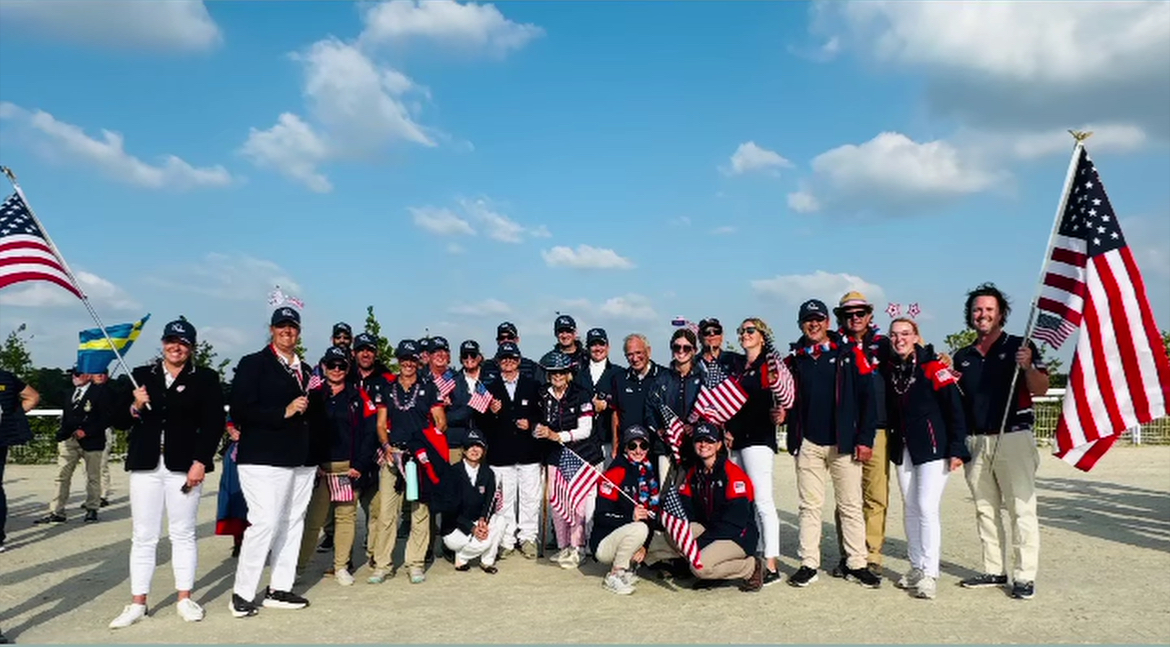Meet the driving force behind Team USA
When the top combined driving competitors gathered in France this month to vie for the world’s championship, a 35-year College of Health Professions administrator was at the center of the American effort. Selected by US Equestrian as the chef d’équipe, or team manager, Jeff Legg ensured the country’s single-horse drivers were ready to pursue a medal.
Legg has grown into this role over the past decade, transitioning from active competitor to key behind-the-scenes figure in this unique equestrian discipline that unfolds over three days. The 2024 Fédération Équestre Internationale (FEI) Driving World Championships for Single Drivers were held Sept. 19-22 in Le Pin-au-Haras in Northwest France.
 Combined driving, as Legg explains, is a triathlon for horses, along with their carriage crews. It blends the elegance of dressage with drivers often in formal attire, the speed and power of cross country, and the precision of a cones course where gates are barely wider than the carriage. Drivers pilot the carriage that is pulled by a single horse, a pair or a team of four; a carriage for a four-horse team can weigh up to 1,100 pounds.
Combined driving, as Legg explains, is a triathlon for horses, along with their carriage crews. It blends the elegance of dressage with drivers often in formal attire, the speed and power of cross country, and the precision of a cones course where gates are barely wider than the carriage. Drivers pilot the carriage that is pulled by a single horse, a pair or a team of four; a carriage for a four-horse team can weigh up to 1,100 pounds.
At the heart of a strong team is the unspoken communication between the horse and driver through those three unique challenges.
“Combined driving almost replicates what single riders do in eventing, where they do dressage, which is similar to the compulsory figures we used to see in figure skating. They do cross country, where they gallop across fields, on their way to various obstacles that look like mazes,” said Legg, PhD, RT(R)(CT)(QM), FASRT, chair of the Department of Radiation Sciences. “Their final phase is stadium jumping, but, since we don’t want our horses to ever jump, our third leg is driving between a set of cones with only inches of clearance.”
The late Prince Philip is credited with shaping its modern-day form. Taking up the sport in his 50s after retiring from polo, the British royal presided over the sport’s governing body, FEI, for more than two decades. He also authored Competition Carriage Driving, among other books on the sport.
A triathlon for horses
Outside of some scenes in later seasons of “The Crown,” combined driving might not have the mainstream recognition of horse sports such show jumping or racing, but for Legg, it sparked a passion that has carried him around the globe.
“I began as a ‘horse husband,’” he said. A former dressage competitor, Lynn, his wife, returned to equestrian sports after an injury as a carriage driver. She retired in 2020 from the School of Dentistry, where she was a radiology specialist.
“I fell into it by helping her at shows, and then riding on the back of her carriage as her navigator,” said Legg, noting that meant previewing the course and offering tips and strategies during competition, not unlike the relationship between a golfer and caddy.
As a competitor, Legg has filled every seat in the carriage: navigator, groom and even driver, including competing with a miniature horse – a new phenomena in the sport. His shift to becoming an official and chef d’équipe came when his driving partner, one of the best in the field, retired.
Supporting the team
 As chef d’équipe, Legg manages the team logistics and operations, much like a politician’s advance crew. He communicates with competitors and oversees the setup of the team’s stabling and facilities at the venue; his colleagues oversee shipping horses and equipment by cargo planes.
As chef d’équipe, Legg manages the team logistics and operations, much like a politician’s advance crew. He communicates with competitors and oversees the setup of the team’s stabling and facilities at the venue; his colleagues oversee shipping horses and equipment by cargo planes.
“I manage the process for our competitors, so the drivers can concentrate on their horses,” said Legg, who has competed in the United States, Canada and Europe. “I’m not the coach or a trainer who will be working with the drivers and horses to improve their gaits or things like that.”
His experience with the venue, after serving as chef d’équip role in 2022, will be instrumental in preparing the team. He’s familiar with the course and the horse facilities at the 2,500-acre complex commonly called the “Versailles of the Horse.”
The three-person team will use every bit of insight to their advantage, given how competitive each phase can be. The cones course, for example, requires expert precision.
“There’s probably about 2 inches of clearance on each side of the wheel, and you have to drive it accurately, but also with a little bit of speed,” he said. “Being the follow-up to the cross-country marathon – where a navigator on back serves as a ballast to keep the carriage from flipping on hard turns – it’s the phase that everyone really likes because it’s kind of an adrenaline rush.”
Caring for elite athletes

Because the athletes are the horses themselves, Legg ensures every protection for them in his role as a steward. “Speaking for ourselves, our horses eat better than we do. It’s very similar to what most elite athletes experience,” he said. While he’s officiating, he’s monitoring the care horses receive, including their rest periods, what they’re eating and how much water they’re drinking.
With each competition, he draws on his experience in combined driving, not to mention the people management skills he’s developed in his day job – “especially in academics, where you have a wide variety of personalities.”
“These horses love what they do,” said Legg, who tends six horses at his Charles City County farm. “They’re athletes just like us, and you can see their excitement for competition.”